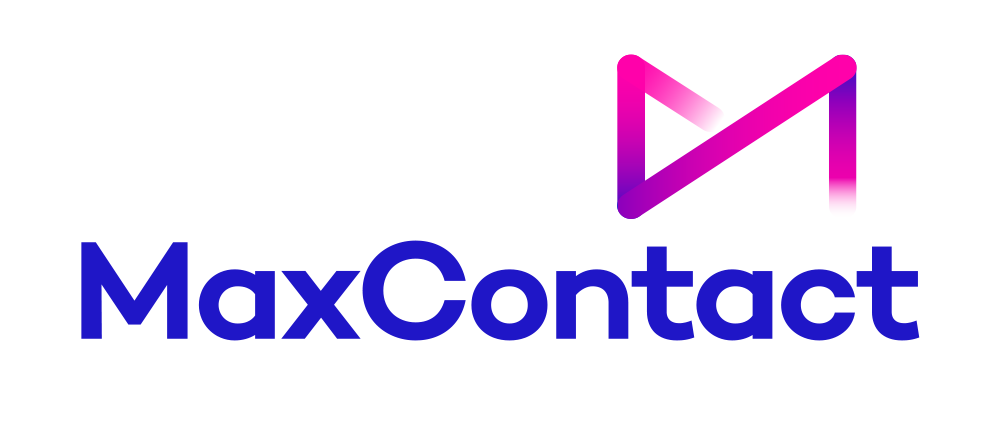Predictive vs Progressive Diallers: Understanding the Differences
Automation is poised to bring a productivity boost worth $2.2 billion to the Australian economy. Across a wide range of sectors, advanced digital solutions are transforming how businesses operate – and call centres are no exception.
Digital tools are allowing outbound call centre agents to reach potential customers more effectively than ever before. But if you want to make the most of these tools, you need to understand how they work and decide which option is the best fit for your needs.
Below, we’ll break down the differences between two essential call centre automation tools – predictive and progressive diallers. We’ll explore the pros and cons of each and help you identify which is right for you.
Predictive vs Progressive Diallers: The Key Differences
Predictive and progressive diallers are both tools for automating your outbound communications. However, they do have some fundamental differences:
- Predictive diallers automatically dial multiple numbers from your outbound call list and only route through calls that connect. They use an algorithm to predict when agents will be available, helping to maximise utilisation rate and minimise idle time.
- Progressive diallers automatically dial the next number in the call list as soon as an agent becomes available. It screens out calls that result in a busy signal, voicemail message, or that otherwise don’t connect.
As you can see, while both types of automated dialler focus on maximising efficiency and reducing the time your agents spend waiting for calls to connect, they approach this in different ways.
In the table below, we’ve summarised the key differences between these two tools. If you’d like a more in-depth explanation of how they work and the pros and cons of each, read on below.
|
Predictive dialler |
Progressive dialler |
|
Dials multiple numbers at once |
Dials one number at a time |
|
Starts dialling before agents are available |
Dials only when an agent is free |
|
Uses algorithms to predict agent availability |
Uses a simpler sequential dialing approach |
|
Higher call volume and reach |
Lower call volume and reach |
|
Limited time for agents to prepare |
More time for agent preparation |
|
Minimal risk of abandoned calls |
No risk of abandoned calls |
|
Minimal delays for customers |
Ensures agents are immediately available |
What is a Predictive Dialler?
A predictive dialler is an automated dialling system that prioritises high call volumes. To achieve this, it dials multiple numbers at a time without waiting for an agent to be available. If a call connects, it is automatically routed to the next available agent.
To minimise the risk of a call connecting when an agent isn’t available, predictive diallers use algorithms to anticipate how long it will take for an agent to finish their current call. These algorithms automatically analyse a range of real-time call centre data, including average handle times, connection rates, and the number of agents currently available.
Based on this data, the algorithm can adjust the dialling pace to minimise agent idle time while avoiding calls connecting when an agent isn’t available. Of course, the algorithm can never be totally accurate. This means that there is a risk of your call abandonment rate rising as customers pick up without an agent available to speak with them.
Benefits of Predictive Diallers
- Improved efficiency. A predictive dialler can significantly improve the efficiency of your outbound call centre by initiating calls before your agents finish speaking. This increases agent utilisation rate and avoids time wasted on calls that don’t connect.
- Higher call volume. By dialling multiple calls at the same time without waiting for agents to become available, predictive diallers radically increase the total number of calls your call centre can make.
- Real-time adjustments. The predictive dialler’s algorithm automatically adapts in real time to any changes in key metrics. If the average handle time gets longer or your abandonment rate creeps up, your predictive dialler will change its dialling pace accordingly.
- Detailed analytics. Predictive diallers often incorporate advanced data collection and analytics capabilities. This allows you to monitor the performance of your call centre in a more granular and sophisticated way and track a range of KPIs in real time.
- Reduced operational costs. With a higher agent utilisation rate and a higher call volume, your overall cost-per-call will be lower. If your conversion rate remains the same or increases, the ROI for your outbound communications strategy will also improve.
Limitations of Predictive Diallers
- Minor risk of abandoned calls. The predictive capacity of algorithms is never perfect – as a result, a predictive dialler may occasionally lead to calls connecting when an agent isn’t available. However, MaxContact’s advanced predictive dialler software allows you to set your abandonment rate, ensuring you can meet your KPIs.
- Less chance for agents to prepare. A predictive dialler is designed to ensure the next call connects as soon as an agent is available. However, this means your agents will often have little time to review any information before the call begins, which may impede the quality of the interaction.
- May harm employee engagement. Increasing your agents’ utilisation rate and talk time beyond a certain point can prove mentally draining. This may impact their performance and, in the long term, can lead to decreased motivation, lower morale and even absenteeism.
- Brief delays for customers. As calls are not routed to an agent until they connect, this can lead to a delay between a customer answering and an agent greeting them. However, these delays can usually be kept to less than a second, so the impact on customers will likely be minimal.
When to Use a Predictive Dialler
Predictive diallers are ideally suited to high-volume call centre environments where maximising efficiency is essential.
For instance, if you’re implementing a B2C outbound marketing strategy that’s focused on extending your reach as far as possible, a predictive dialler can be enormously helpful. Similarly, market research firms that rely on conducting large numbers of surveys will secure significant benefits.
On the other hand, if you’re focused on conducting a smaller number of high-quality conversations with carefully selected leads, a predictive dialler may not fit your needs.
What is a Progressive Dialler?
A progressive dialler automatically calls the next person in your outbound call list as soon as an agent is available. Also known as a power dialler, this is an effective way to optimise the efficiency of your outbound operations without sacrificing a personalised approach.
A progressive dialler system can automatically screen out busy signals, voicemail messages, and disconnected numbers, ensuring that agents are only connected with live contacts. Further, they can ensure that the same contact is not called by multiple different agents.
A progressive dialler strikes a balance between automation and personalisation. While it ensures that agents always have their next call lined up, it still gives them time to review any relevant information and prepare before the call connects.
This approach empowers your outbound agents to provide tailored interactions that will boost your customer experience and even improve your overall conversion rate.
Benefits of Progressive Diallers
- Zero abandonment rate. Progressive diallers only initiate a call when an agent is available. This removes the risk of abandoned calls.
- Enhanced customer experience (CX). A live agent is always ready when the call is answered, which means that customers and prospects can be greeted without delay. This will reduce the risk of frustration and may even help to boost your CSAT scores.
- Increased agent preparedness. Agents will have time to review any relevant information while the call connects, including account information, previous interactions, and more. This will help them to deliver a more personalised experience for customers.
- Improved employee engagement. A progressive dialler allows you to provide a more manageable call flow for your outbound agents. This reduces the risk of burnout and minimises stress, which can in turn lead to a more engaged work environment.
Limitations of Progressive Diallers
- Lower call volume. While progressive diallers will achieve higher volumes than manual approaches, they fall short of what can be achieved by predictive diallers. If your focus is on maximising your total number of calls, it may not fit your needs.
- Reduced scalability. If you need to scale up your outbound campaign quickly, a progressive dialler may struggle to keep pace. Similarly, if your call centre grows in line with your overall business growth, you may find it necessary to switch to a predictive dialler.
- Agent idle time. While progressive diallers do incorporate features designed to limit idle time, they do have limitations on this front. As they only dial one number at a time and only do so when an agent is available, there will inevitably be times when agents are waiting for calls to connect.
- Difficulty handling low-quality data. If your contact list contains a relatively large number of invalid numbers or low-quality leads, a progressive dialler will be significantly less efficient than a predictive dialler. It will have to sequentially connect to each number before removing it from the list.
When to Use a Progressive Dialler
Progressive diallers are well-suited to situations where efficiency needs to be balanced against delivering a top-quality customer experience.
For B2B sales teams, for instance, a progressive dialler can enable you to reach out to a large number of potential clients without sacrificing a personalised approach. Your agents will still have time to access and review relevant information before the call connects – especially if you have an effective knowledge management system.
Similarly, healthcare providers can use progressive diallers effectively for routine calls such as appointment reminders and follow-ups. Agents will have relevant patient data on hand but can still work through their call list at a consistent pace.
Maximise the impact of your automated dialler with MaxContact
Automated diallers are an essential part of your call centre’s tech stack. If you want to stay ahead of your competition, you need to leverage the latest in automated and AI-powered technology – and that’s exactly what predictive and progressive diallers can offer.
Nevertheless, these tools aren’t without their limitations. It’s essential that you pick the right software for your business – and that doesn’t just mean choosing between a predictive and a progressive dialler. You also need to find a software provider that offers an advanced and fully integrated feature-set in order to maximise its impact on your operations.
At MaxContact, our outbound call centre software incorporates a wide range of cutting-edge features, including a predictive dialler powered by advanced Artificial Intelligence. You’ll benefit from a maximised call volume with limited impact on your abandonment rate.
For an in-depth look at how our outbound call centre software can transform your business, book a free demo today.
.png)
From the blog






